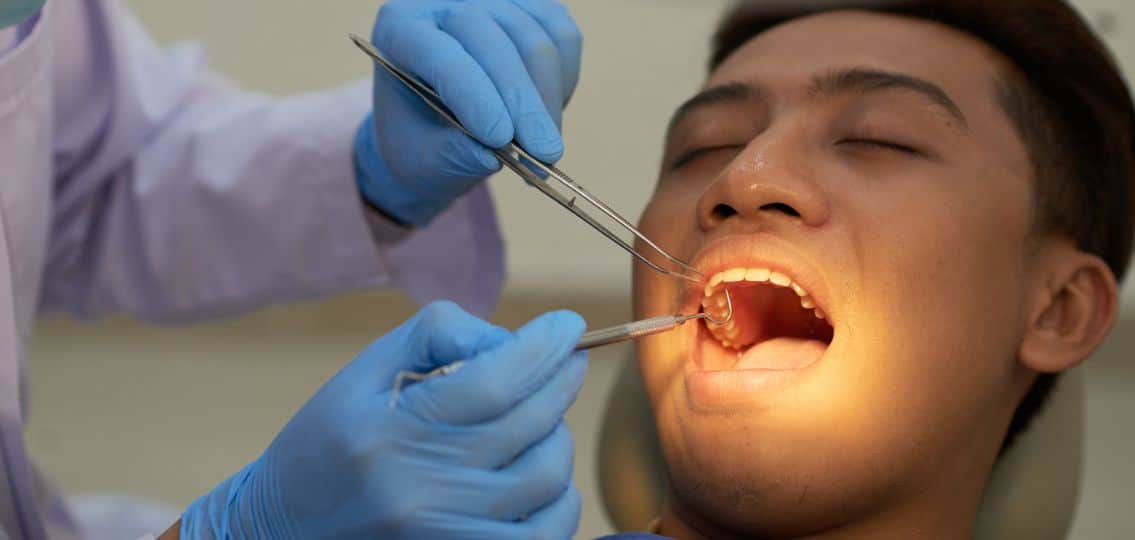
By Deborah Skolnik
April 4, 2023
If you are concerned about whether the functional needs of your child’s disability are affecting their dental care, fear not. With some extra visits and a few clever workarounds, an orthodontist can make each step of your child’s treatment comfortable and effective. In other words, it’s very possible that an orthodontist can help your child have an incredible smile!
Dr. Philip Bomeli of Solon Orthodontics has extensive experience providing orthodontia to children with disabilities. Here, he describes the specialized care you can expect your child’s orthodontist to provide.
A good orthodontist will educate, collaborate, and listen to patients and their families.
Dr. Bomeli prioritizes education and collaboration with parents. He views each child as unique. So while clear aligners can be a great option for children with certain disabilities, the information parents provide about their particular child may indicate that braces are the better option. It all really depends on the particular child and their individual needs.
He explains his approach this way: “We educate the family, and then we go over the pros and cons of braces and invisible aligners. Ultimately, we leave it up to them. The parents or the patient themselves know better than we do.” So, make sure you talk to your child about their oral hygiene practices and communicate with your child’s orthodontist about what they’re doing and what extra support they might need.
You can adjust the pace of your child’s treatment.
Scheduling a leisurely visit often helps children feel more at ease. Dr. Bomeli says that in his experience, “It’s about taking the appropriate time with them and really helping to get them used to things.”
Autistic children and kids diagnosed with other developmental disorders like ADHD may benefit from spreading their treatments out. Dr Bomeli notes that although it typically takes about two hours to do a full set of records and put braces on a patient, it’s important to be mindful of how much your child can tolerate, which might be only half the work in that amount of time. “So, instead of putting on both arches of braces in one day, you just do one and see how it goes. And that’s okay. You can schedule another appointment down the road,” Dr. Bomeli explains.
Mini breaks can make long appointments more tolerable.
Long appointments can be challenging for children with ADHD or certain other conditions, and it may be difficult to get them to remain in the chair for treatment. Instead of shortening the appointment, Dr. Bomeli’s strategy is to break it up into smaller pieces, with breaks in between. This way, your child is in the chair for only twenty minutes or a half an hour at a time.
Dr. Bomeli uses those breaks efficiently. He says, “We take a little break and talk to the child about things that we need to discuss anyway during the appointment, such as caring for your braces and oral hygiene instructions.”
If your child’s orthodontist isn’t providing breaks already, don’t be afraid to ask for them because, according to Dr. Bomeli, segmenting time in the chair is remarkably effective. “There’s been a number of times when either a parent or the patient thought, ‘I’m not going to be able to undergo this. And then, they are surprised. They say to themselves, ‘Actually, I can. It’s okay,’” he shares.
Orthodontists can modify their approach, the tools they’re using, and their techniques for each patient.
Dr. Bomeli sees a broad range of patients in his practice, including those diagnosed with Down Syndrome or autism. He says he can tailor his approach to each child’s unique needs. He notes, “If they’re on the autism spectrum, they maybe have some sensitivities to touch, or certain things being put in their mouths. They still deserve the best care we can possibly give them.”
To make visits less intimidating, orthodontists may modify the equipment they are using. As Dr. Bomeli explains, “We use cheek retractors in our office daily. They’re our first go-to, because they adequately keep the lips, cheeks, and tongue out of the way. That’s important because if things aren’t dry, we can’t get the braces to stick very well.”
Because each patient is unique, orthodontists are prepared to pivot and adjust their techniques as necessary. “Maybe we do fewer teeth at a time. We’ll modify how we keep things dry, and what techniques we use to bond the braces,” Dr. Bomeli says.
Orthodontists may also use everyday objects to give their patients a greater sense of control. Dr. Bomeli shares, “Just recently, we had an autistic patient who was feeling very nervous. We handed him a mirror so he could actually watch what we were doing. And almost instantly, he was at ease and totally fine with it. He could tell we weren’t going to do anything that would hurt him.”
A great orthodontist cares for people, not just teeth.
An individualized approach to orthodontia is not just effective, it’s also thoughtful. As Dr. Bomeli says, “When it comes to taking care of our patients, we treat people, not just their smiles. Every single patient deserves the best care we can possibly offer them.”
By taking the time to understand the needs of patients and adapt their approach accordingly, orthodontists can provide top-notch care to everyone who walks through their doors.

 PARENTING TIPS
PARENTING TIPS







 PREGNANCY
PREGNANCY








 BABY CARE
BABY CARE








 TODDLERS
TODDLERS








 TEENS
TEENS








 HEALTH CARE
HEALTH CARE







 ACTIVITIES & CRAFTS
ACTIVITIES & CRAFTS








 CONTACT
CONTACT ABOUT
ABOUT















